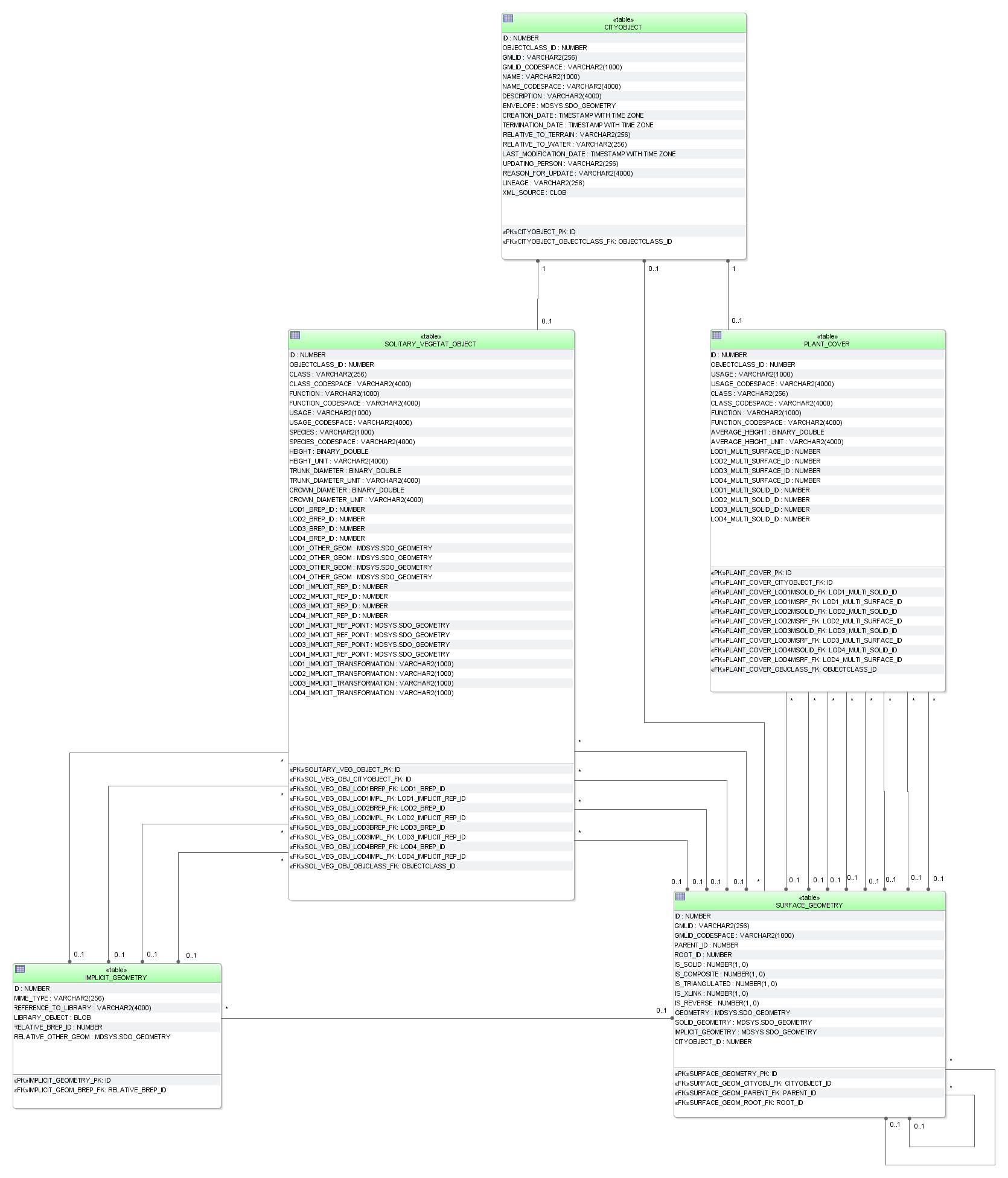2.7.3.13. Vegetation Model¶
The vegetation model specified in Section 2.6.4.10 is realized by the tables shown in Fig. 2.53 which correspond largely to the UML model.

Fig. 2.53 Vegetation database schema
SOLITARY_VEGETAT_OBJECT
The attributes class, function, usage, species, height, trunkDiameter, and crownDiameter describe single vegetation objects. The attribute species is of type gml:CodeList in CityGML that can be referenced to a certain codespace. Therefore, another _CODESPACE column is provided in the SOLITARY_VEGETAT_OBJECT table. Similar to the building table attribute with measure information can optionally be coupled with a reference to the used measuring scale by an additional _UNIT column.
The geometry of the vegetation can either be described explicitly using the attribute LOD4_OTHER_GEOM or LOD4_BREP_ID or implicitly using a foreign key relation the IMPLICIT_GEOMETRY table including a reference point and optionally a transformation matrix (LODx_IMPLICIT_REP_ID, LODx_IMPLICIT_REF_POINT LODx_IMPLICIT_TRANSFORMATION, with 1 ≤ x ≤ 4).
PLANT_COVER
Information on vegetation areas are contained in attributes usage, class, function, and averageHeight. There is also a _UNIT column to specify the scale the averageHeight values are based on. The geometry is restricted to a MultiSurface or (and this is unique for PlantCover features) a MultiSolid, represented respectively by the foreign keys LODx_MULTI_SURFACE_ID (with 1 ≤x ≤ 4) and LODx_MULTI_SOLID_ID which refer to the SURFACE_GEOMETRY table.